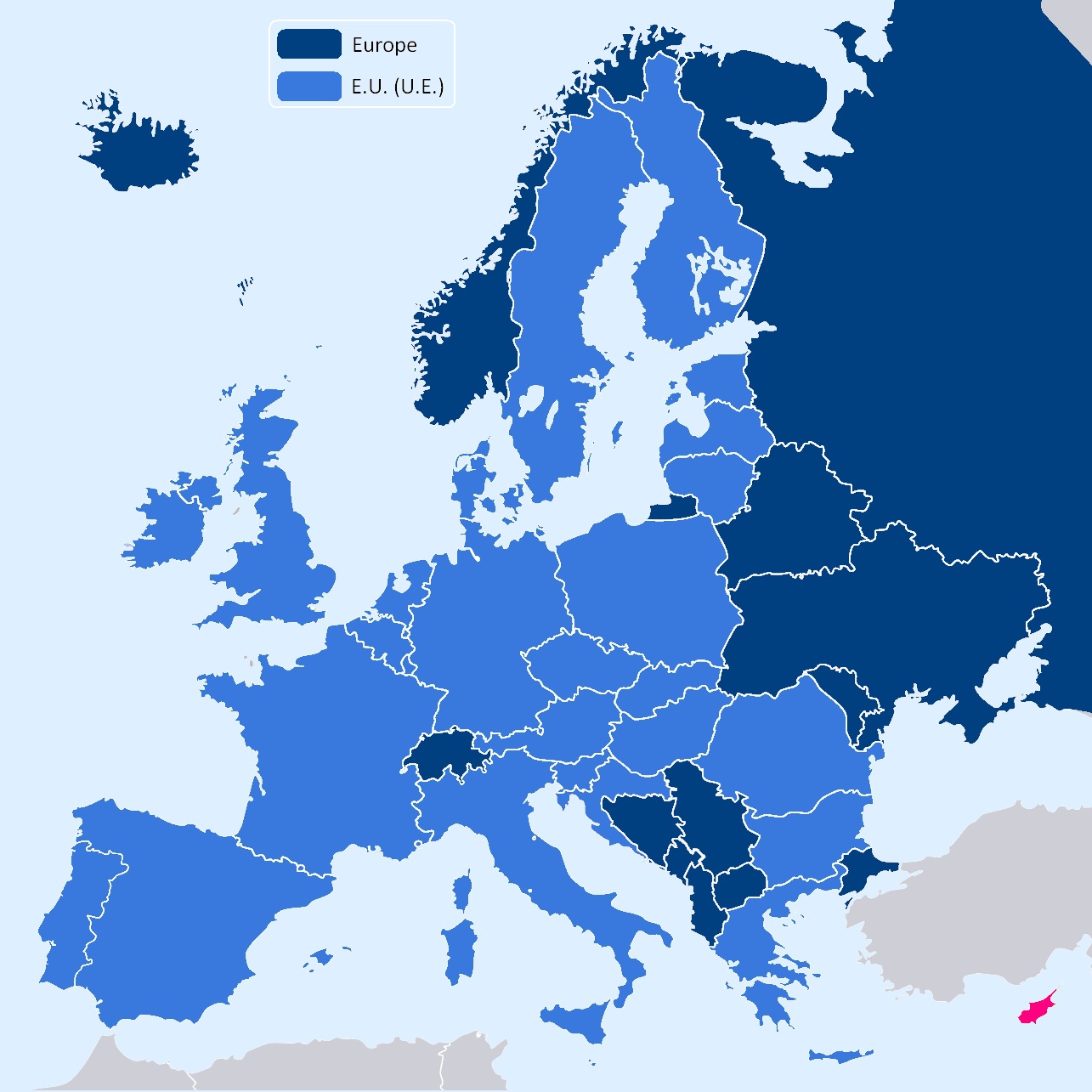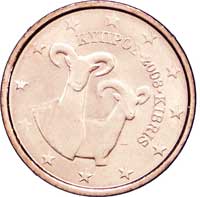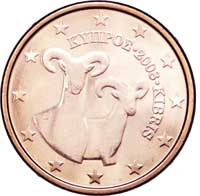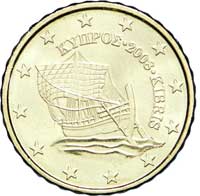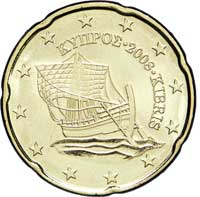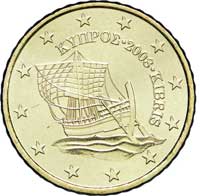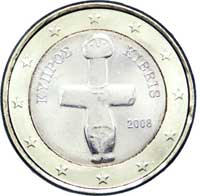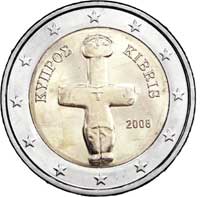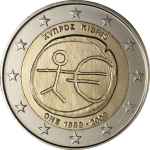| |||||||||||||||||||||||||||
General data
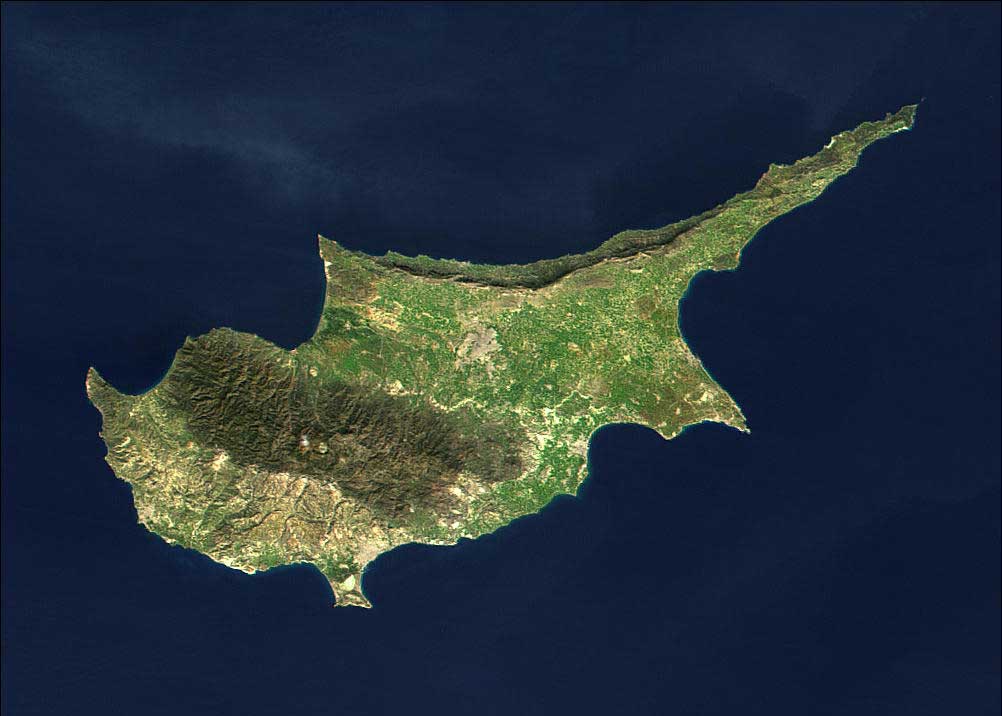 Mycénienne, phénicienne, l’île deviendra égyptienne puis, logiquement, romaine (58 av. J-C) et byzantine. Conquise par les Arabes au Xème siècle, Chypre sera reprise par Richard Cœur de Lion lors de la troisième Croisade. Celui-ci l’offre en 1192 au calamiteux Guy de Lusignan, le roi de Jérusalem responsable du désastre de Hattin face à Saladin. Les chevaliers de Saint Jean de Jerusalem s’y installeront un temps, avant de s’établir à Rhodes. Guy de Lusignan et ses successeurs vont régner jusqu’en 1489 sur Chypre, et la veuve du dernier roi Lusignan, Catherine Cornaro, une vénitienne, lègue l’île à sa patrie.
Les hellénophones majoritaires parlent un grec qui diffère notablement de celui de la Grèce. Cyprus and the Euro
Its economic results of 2005 were not satisfactory on all the criteria (whereas they were satisfactory in 1992, during the adoption of the criteria of Maastricht). The report of March 2006 was however very optimistic, the only unfulfilled criterion being that of the national debt (lower than 60% of the GDP) which was reached in the long term (let us note that on this criterion, it is the tendency which is appreciated). In May 2007, Cyprus issued a coin of £1 (not intended for circulation), reproducing the pattern of the coin “the Treaty of Rome” of the thirteen countries of the Euro area; this coin was sold at a very high price by the Bank of Cyprus. The European Council of Berlin then ratified the recommendations of the ECB and of the Commission for an admission at January 1, 2008. The final parity was then the pivot parity of ERM II period. Putting into circulation of the starter kits and of the first BU sets was the subject of polemic and interrogations; the double circulation period was fixed at one month. Cyprus does not have any workshop, Finland strikes the Cypriot €coins but there is no mintmark on the coins.
Great Britain, after the independence of the Cyprus Island, obtained the right to preserve two military bases which are the only points of strategic support it has at its disposal in the Mediterranean Sea. The agreements made with the Cypriot government provide that Great Britain exerts its sovereignty and thus full jurisdiction on these two territorial enclaves. They are called AKROTIRI and DEKHELIA. The population which lives on these two territories is made up of soldiers and of civilian English people belonging to the Ministry of Defence as well as their families, so to say around 14,000 people. However the agreements made with the Cypriot government in 1960 provide that the only currency which has legal tender in these two enclaves is the Cypriot pound. It is thus quite naturally that the Euro was adopted on these military bases on January 1, 2008, Euro which thus has legal tender on part of the British territor...
- 1, 2 and 5 cent: the moufflons (characteristic species of Cyprus)One will note the name of the country which surrounds the patterns: KYΠPOΣ (Kyprosin Greek) and KIBRIS (in Turkish).
€2 euro commemorative coins Taking the opportunity of the common issue of the €2 commemorative coin relating to the 10th anniversary of the Euro, Cyprus carries out its first commemorative coin.
The country letter of the Cypriot banknotes is the G. Contact E-mail: pays@amisdeleuro.org Links - Description of the monetary competition on the website of the Central Bank of Cyprus: http://www.amisdeleuro.org/documents.php?doc_id=55&lg=fr - More generally, the website of the Central Bank of Cyprus: http://www.centralbank.gov.cy/ - Official communiqué for the admission of Cyprus in the Euro area: http://www.amisdeleuro.org/documents.php?doc_id=54&lg=fr - Polemic on the starter kits and on the BU sets: http://www.amisdeleuro.org/documents.php?doc_id=240&lg=fr | |||||||||||||||||||||||||||
 AD€ - Les Amis de l'Euro
AD€ - Les Amis de l'Euro
